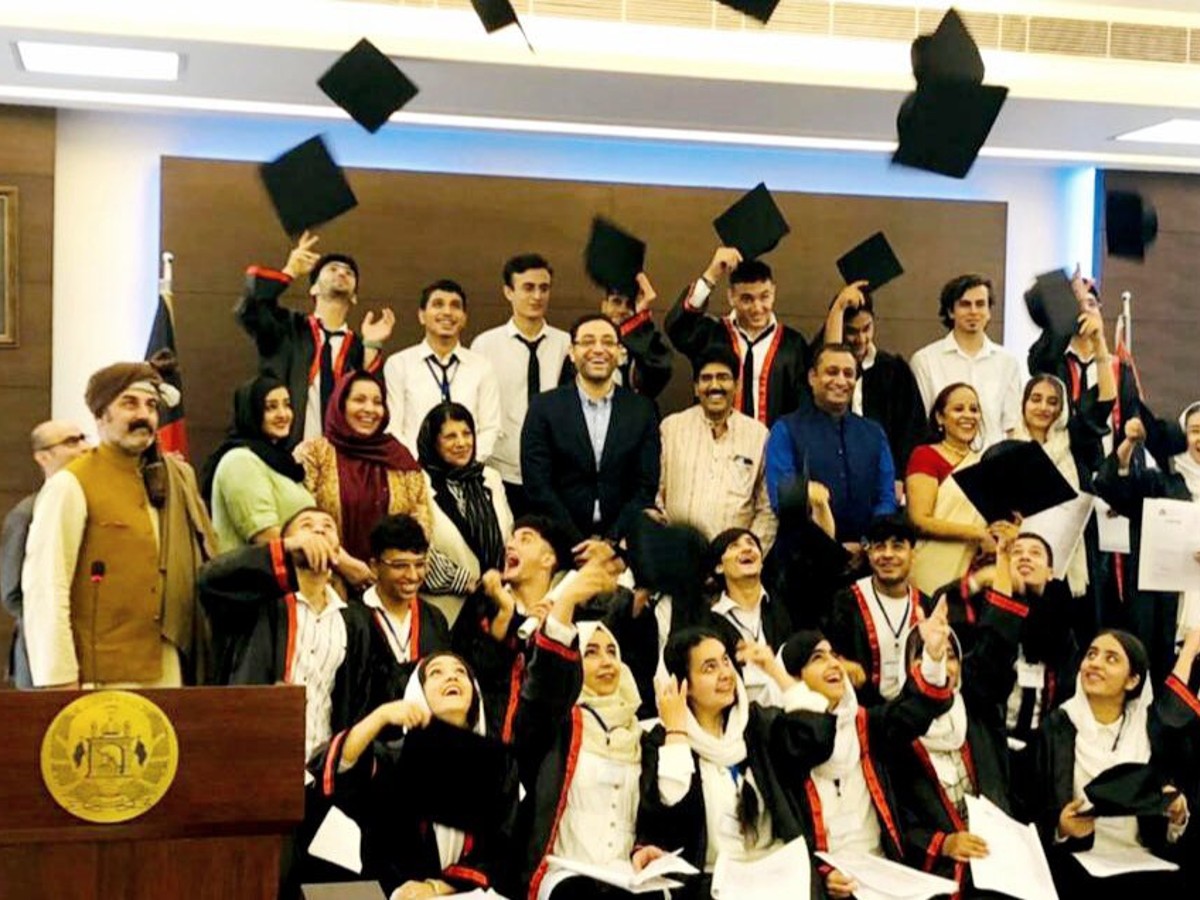Struggling to survive, Syed Jamaladdin Afghan School with 35 teaching staff and around 270 students, is forced to start its academic year again in an online mode. Not because of the Covid – 19 pandemic or a lockdown but because of a non-existent physical structure of the school.
Founded in the year 1994 by the Women’s Federation for World Peace (WFWP) at Lajpat Nagar and later shifted to Jangpura in the early 2000s, Delhi’s only school for the Afghan refugees and residents is struggling to make the ends meet.
With students enrolled from classes 1 to 12, the Afghan School had a total number of 400 students until January 22, but the numbers have seriously decreased. Despite the dwindling numbers, the school has somehow managed to retain the number of teaching staff.
As the time passed
The school had continuous financial support by the Afghan Ministry of Education through the Embassy in New Delhi, but the situation changed with a complete fund cut after the Taliban takeover of Afghanistan. With the arrival of the Taliban in power, the flow of funds and support from Afghanistan reached a complete dead end.
As per one of the teaching officials at the Afghan school under the condition of anonymity, the situation was not very good in terms of monetary support. “Afghanistan in the pre-taliban times was constantly in a state of war, but the previous government had a soft corner for its people and their children living far away in a foreign land. However with the arrival of Taliban, we were left in a sheer state of hopelessness”, she stated.
While the school was already struggling with the covid pandemic, the political turmoil in Afghanistan resulted in the escalation of problems. The school ended up with no money to pay its teaching and non-teaching staff and ultimately had nothing to hold the premises in the Jangpura area on rent.
The salaries remained unpaid for more than a period of 10 months and members of the board even sold their personal assets to pay the school staff.
One of the school officials in conversation with Patriot stated that it was just the beginning of the tough times. “With no one to be called for help from our own country, it was just the small community of Afghans living in Delhi, standing with each other. We stood with our students and staff, it was important to keep the school running at all costs,” the official said.
A single ray of hope
While Syed Jamladdin Afghan School was struggling to survive, the Indian Ministry of External Affairs arrived for help. In the words of Farid Mamundzay, the Afghanistan’s Ambassador to India, “I thank the Indian Ministry of External Affairs for providing the much-needed assistance to the only Afghan school in India. The Syed Jamaluddin Afghan School in Delhi’s Bhogal, is the only educational resource for Afghan refugees and will now continue to operate as usual. The 400 students received a “gift beyond all measures” from the Government and people of India.
The continuity of this school will surely help build the foundations upon which many Afghan youth will shape a better future for themselves and Afghanistan.”
With the arrival of financial aid from the Government of India, the school tried its best to get started with the offline classes, but has failed terribly in finding a proper space for that.
The road map
It has been more than a period of eight months since the Ministry of External Affairs’ helped, but the school left with no other option has again started its new academic year in an online mode.
The School officials have stated that they would like to partner with an ongoing school in order to get a set of at least 14-15 classrooms in the evening, so that both the schools can function in their own way.
“We had meetings with a lot of schools and their administrative boards in the areas of Lajpat Nagar, Bhogal, Jangpura and Ashram as most of our students are residents of these areas, but nothing worked out. We preferred the private schools at first because of their infrastructure and everything but their monetary demands were so high that it was impossible for us to fulfill”, they stated.
“We are in conversations with the government schools as well but the government procedures take a lot of time”, they concluded.
In eyes of students and their parents
Syed Jamaladdin Afghan School being the sole institution for the primary and school level education, decides the future of these Afghan families in Delhi.
Ahmed, one of the students, told Patriot that despite a lot of ups and downs the classes went on. “The situation wasn’t very good when we were functioning in the offline mode earlier, but the school, other than providing education, served as a support system as well”, he stated.
His mother, in addition to Ahmed’s statements, said that the school, however it is going on in the online mode, has been stressful for the students and the parents as well. “You don’t know if your child is actually studying or not, especially in these times when the competition is tough, and especially for us Afghans, who don’t even have a place to go back”, she concluded.
For more stories that cover the ongoings of Delhi NCR, follow us on:
Instagram: instagram.com/thepatriot_in/
Twitter: twitter.com/Patriot_Delhi
Facebook: facebook.com/Thepatriotnewsindia





